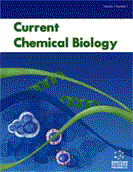Abstract
Chemical rescue is an experimental strategy whereby the activity of a mutant enzyme is restored upon the addition of small exogenous compounds, which somehow surrogate the function of the mutated residue. These molecules become in effect “probes” of the chemical and structural requirements for efficient catalysis by the mutant enzyme. Entire batteries of small compounds can be tested for rescue, making it easier to implement the methods of physical organic chemistry (such as Brønsted analysis) to the study of enzymatic catalysis. To date, chemical rescue has been employed to address enzyme mechanisms in over a hundred studies, helping to identify catalytic residues, to better outline their roles and to probe the structural and functional context in which catalysis occurs. Recently, some researchers have explored the use of this strategy to modulate the activity of specific enzymes in vivo, as a tool for dissecting complex cellular processes. These studies have also raised the possibility that chemical rescue might one day be applied in therapy, for the reactivation of genetically defective enzymes. The present review illustrates the power, the pitfalls and the perspectives of this approach.
Keywords: Catalysis, transition-state structure, pyridoxal 5'-phosphate, glycosidase, ribozyme

















.jpeg)










